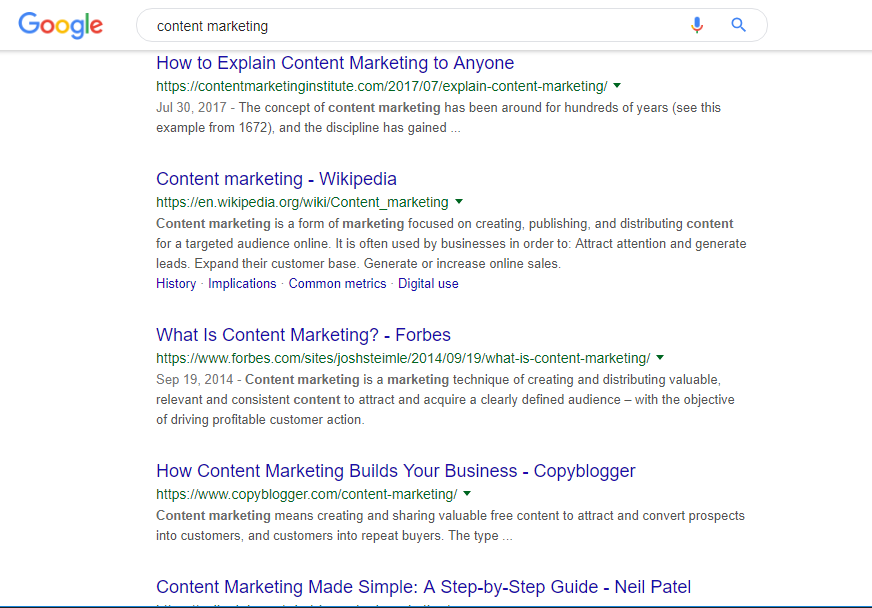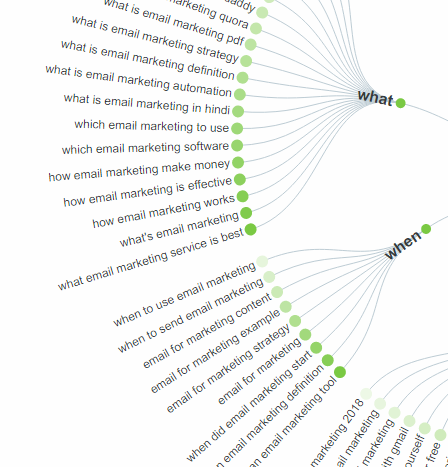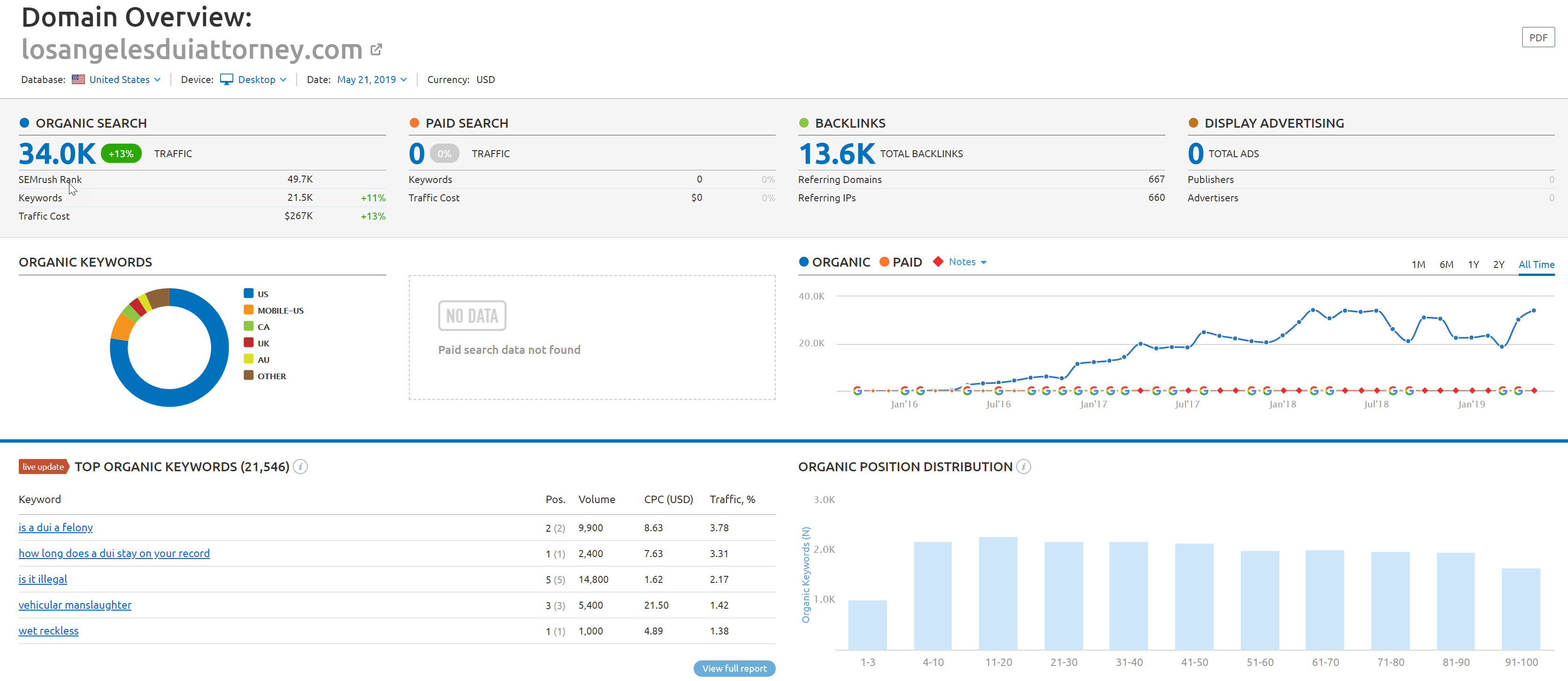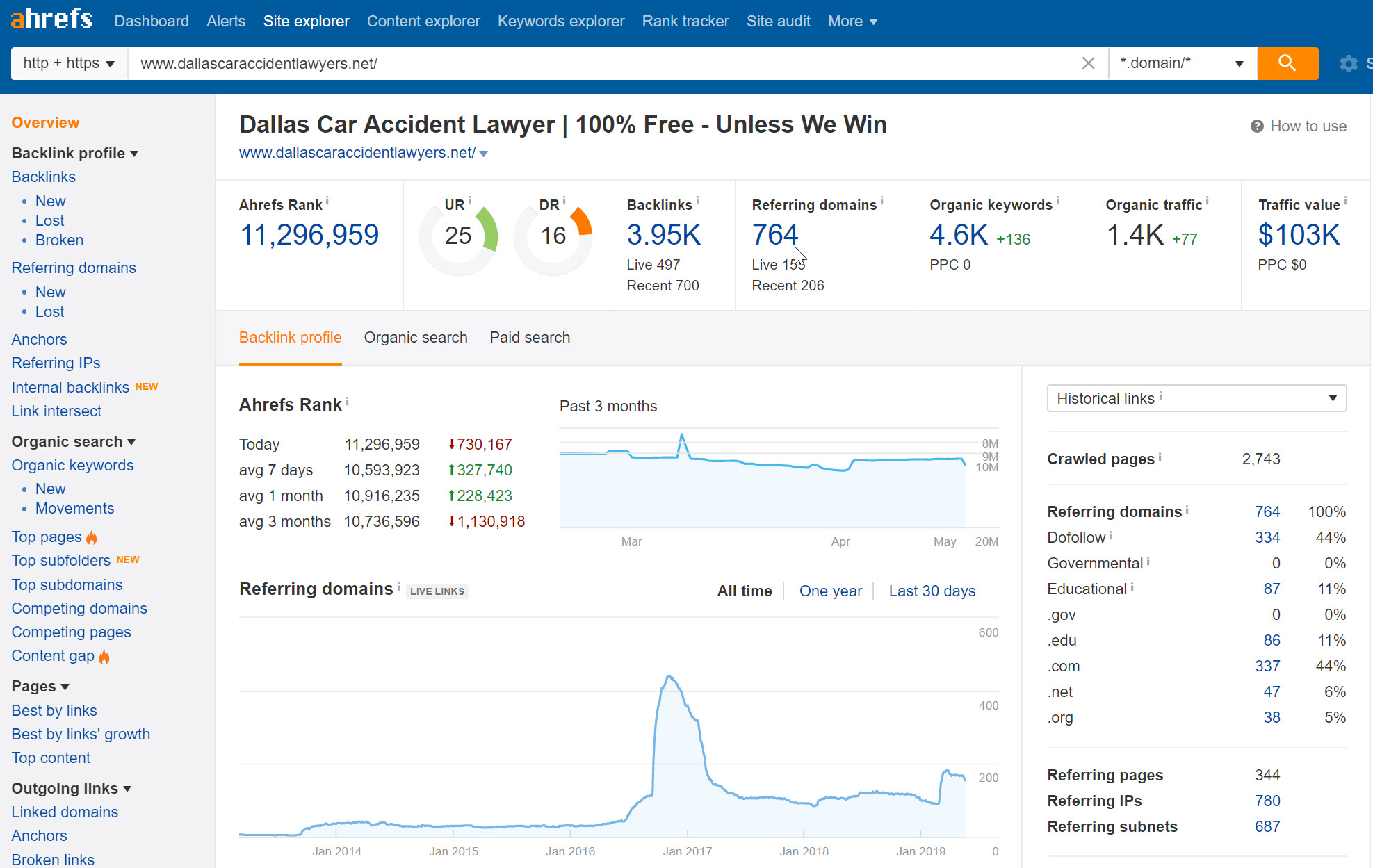Note: This is not a sponsored post.
Craig Campbell is a well-known SEO expert from Glasgow, UK. He has 17 years of experience in SEO Consulting and Digital Marketing. Craig owns an agency where he manages a small team so that he can deliver better results to his loyal clientele. He is also a regular SEMrush webinar host, SEO trainer, and speaker. Since Craig has been helping over a hundred businesses, he decided to start flipping websites for profit.
In this interview, Craig shared his ups and downs of his experience wearing different hats. He also offers actionable tips SEOs can utilize for their own business venture. His style is also very unique, as he is a straightforward guy who cuts straight through the noise – which is exactly why he has been invited to speak at several conferences all over the world, including Thailand, London, Paris, Italy, and more. He is very active on Social Media and has a large following on Twitter @craigcampbell03, where he oftentimes shares a lot of his mind-blowing tips.
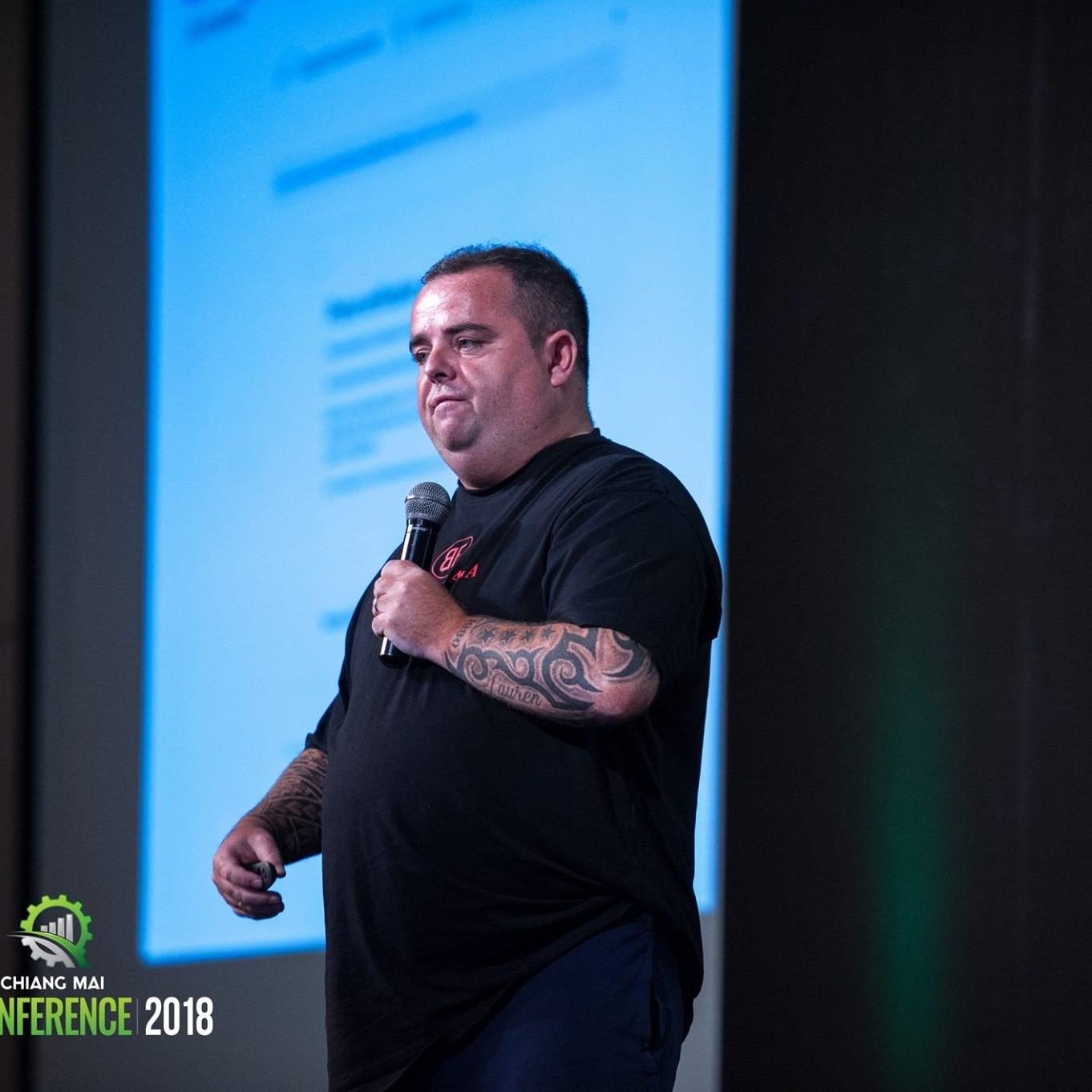 Source: Chang Mai Conference 2018
Source: Chang Mai Conference 2018
Karina Tama: You have a lot of experience in Digital Marketing from owning an agency, being a conference speaker, webinar speaker, contributor, selling online courses, flipping websites for profit, and selling online. Which of these methods generates the most income? Which was the fastest to build?
Craig Campbell: From my own personal experience, the online courses and flipping websites are the most profitable and also the quickest to scale. Having an agency involves a lot of costs attached to the staff, office space, etc, and more time spent with clients as well which is always going to be harder to scale. But the great thing about this industry is that you can make money in a number of different ways, whether that is an affiliate, selling courses, digital agency owner or being a freelancer. Plus, you can niche it down even further by becoming the guy who catches expired domains, the site audit specialist or whatever.
What I highlighted is that I’ve made a lot of mistakes prior to getting myself into the position I’m in now, but this model suits me as a person, how I work, my personality and temperament.
The key is to do what you enjoy doing and model your business around that.
KT: Can you share your experience flipping websites for profit and how much money a person can make?
The answer to this is difficult because you can buy a website for 1 million dollars, and flip it for 2 or 3 times the price by doing some work on the site; however, not many people have that type of money to invest in projects.
But to give you an example, I bought a website for £10,000 and spend around 4k on the site getting some content and links done, and flipped the website for 48k within a 4 month period. There are folks out there doing a lot more than that. Have a look at empireflippers.com to see what some of the websites on there are selling for.
These sites have to produce proof of analytics and revenue too, so it’s not pie in the sky stuff if you get in and do the right kind of work.
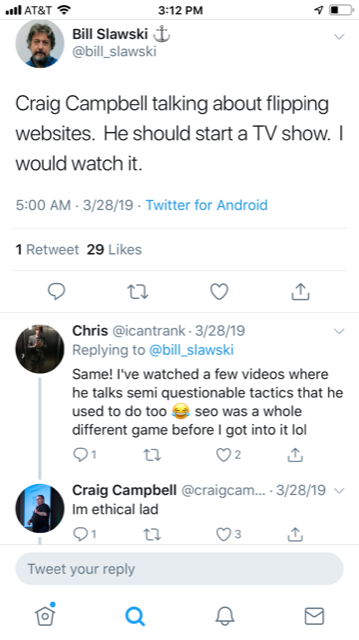 Source: Twitter
Source: Twitter
KT: You always said you’ve made massive mistakes over your years. Can you highlight the biggest and most costly ones?
CC: The mistakes I’ve made do vary and may not be something I would automatically discard for other folks. But I spent a lot of time and effort into building an agency, building up staff and using up a lot of time and energy into doing so. I would have been better spending my time working more efficiently in working on affiliate marketing websites at a much earlier stage. So that is one that I personally feel was a mistake.
But to be honest I’ve made more mistakes than most. I’m an impulsive guy and jumped head first into setting up businesses without doing research first. Years ago I set up a vaping ecommerce store and there was tons of search for the products. I had confidence in my ability to rank and make it work.
What I didn’t do was proper research into the legal side of things. Paid ads weren’t allowed, and taking payments via any source other than PayPal wasn’t allowed. There were so many other little legal niggles on top of having unreliable drop shippers and products, and brands that were constantly changing which resulted in me having a project that I put a lot of time and money into. I got little to no return, simply because I didn’t do any real research.
So do research on all aspects of the business, not just the keyword volumes as that is something I’ve done a number of times and it ended up in failed ventures and lost money.
KT: What’s the minimum commission percentage someone needs to make in order to be able to fund their affiliate marketing business?
CC: This is real difficult to answer as Amazon pays on average five percent but if you get sheer volume, you can still afford to get the content, website maintenance, and everything else done properly. But on a personal level, I do feel Amazon affiliates are hard to get off the ground realistically on a low budget because the commissions are so low. Unless you have a budget to spend to get it off the ground, it is difficult to get going.
I’ve got a golf site and it cost me around 15k to get the site up to a level where it pulls in 1k per month. So it’s going to take me 15 months via Amazon affiliates to get my money back, providing they don’t cut the commission again, and providing Googles updates don’t impact my site. It’s not a cost-effective option choosing low commissions, and as a result, I have to look to private affiliate options to better monetize my golf site to make sure that I’m not constantly losing money on that particular project.
KT: Based on your experience, what is the minimum budget a person needs to start an online business?
CC: In general, I think you need to be realistic and you are likely to need around 10 to 20k to get a good start in the online business world. Of course, there are going to be instances where it can be done for a lot less in weak niches.
KT: What are the most common client misconceptions about SEO? What’s the best way to deal with them as an agency owner?
CC: This is hard. I have always personally found clients hard to deal with, but I completely get their point at times as so many clients have been given the run around by agencies out there offering a poor service. I think client education is important. If you have an agency, by all means, you don’t give them the whole strategy. But they need to understand that SEO isn’t a quick solution and it can’t be done for a few hundred bucks per month. There is time, effort, and expertise alongside the costs for links, content, staff, offices and business profits to be made, so you do get what you pay for.
There are the clients who don’t mind spending money, but want to know way too much about SEO and spend more time on emails and calls talking about SEO than you do getting work done. In this instance, we tell clients we can offer them training and consultancy at an additional cost.
I do feel in our industry we get questions from clients like: where are you getting your links from?, What on page tweaks are you doing? The clients are basically digging deep into how the work is being done, and that will only result in them being fed a load of sales talk or misleads.
So in my opinion with SEO if you deal with clients, give them traffic rankings and improvements along the way. But keep them at arm’s length so that they don’t need to know the in’s and outs of the strategy. I do feel many people think that they can simply expect an agency to hand the secret sauce over on a plate with no questions asked. No other business in the world would do that, so why expect it from SEOs?
So set expectation levels from the get-go and make sure they know how and what you will be reporting on. The minute you let the client walk all over you, you are in big trouble.
Share this article
Related articles
KT: For a person that is just starting a small SEO agency and has a limited budget, what are the must-have SEO tools to get the job done?
CC: SEMrush is a good all in one SEO tool. You do have other low costs tools like contentcal.io which is a social media scheduling tool that I like. It helps me schedule and set up all my social media messages and it is very low cost.
Then as you grow you can look into other tools that will help you grow, but these are just two to begin with. Most agencies have five or six different tools if not more that will help them with their day to day work and processes.
KT: What time management tips do you have for someone starting an agency? How do you prevent burnout?
CC: Well, what I can say is in the past when I started out, I worked so hard I ended up with anxiety and depression at one point, working 18-hour shifts if not more, unsociable hours and having no real structure was tough.
Then I was young, naive and thought I wouldn’t ever break, but there comes a time when you do burn out and don’t become productive.
In the end, I removed emails from my phone. I worked 9-5 Monday to Friday, and I got away from the laptop in the evening and choose to spend time doing things I enjoy to relax with my family and friends. Also, I spend my weekends switching off.
So rather than replying to client emails in the middle of the night from your mobile in bed, relax, sleep and get into the routine of working normal business hours.
I know many of us have to put a serious grind in at the start to build a business and it might take a little bit more than nine-to-five Monday to Friday to get the business off the ground. But do try and take time out, do try and wind down and de-stress and do spend time with your family and friends as you only live once, and you work to live, not live to work.
KT: You always said it’s important to be at the top of your game. How do you do it and what’s your advice to others about it?
CC: Network regularly, and surround yourself with the right people.
I regularly speak at events and network with people but I am also learning at the same time. I also go to private masterminds which is useful as you can learn and share with some of the top names in the industry and that for me is what keeps you at the top of your game.
Obviously, these things cost time, money and effort to get along too. But you need to invest in yourself if you want to be the best you can be. In recent years, it’s also important to give something back as no-one is going to accept some leach into the circle. So offering value in yourself is massively important. The more you open up, the more others will open up.
I potentially in the past thought this would be crazy to open up to your peers. But when you realize there is money for us all to make and no-one really cares about your specific niche, you will find that you can learn more and develop.
I would say speaking at events has also helped me massively with that type of thing as well. As speaking gets me to the events, but the information shared when talking one on one with people, or very often at the bar before or after events is where the golden nuggets come from. You need to be there to get them, or someone else will.
KT: In your experience with ROI SEO such as paying for traffic, and buying backlinks, have you ever had a website penalized for this?
CC: Through testing, I have crashed and burned websites to see how far I could push them. But never had a money site penalized by SEO work that I have done. However, I have negative SEO attacks and stuff like that where I have had some issues. But the intention is never to get my websites banned. I try and do things as ethically as I can. Of course, I would be lying to say I didn’t bend a few rules here and there, but who doesn’t?
But if you want to simply go out and pay for spammy links, it’s a sure way to ruin your business, mix things up, try and do as much as you can ethically. Then look at the other stuff as the icing on the cake is maybe the best way to look at things.
One thing I would say is, don’t believe all the scaremongering there is out there. Links still work well, keep them relevant, with sites with good DR and from websites that get traffic and you won’t go far wrong.
Avoid getting links from low-quality sites with no traffic, link farms and all of that stuff, work smart and know what your buying and you will be fine.
KT: You have been to conferences in so many countries. Do you have plans to do any conferences in the USA?
CC: I’d love to do some in the USA. I’m fairly well known in the UK and Europe from speaking at events.
I would love to do if the opportunity came up. I have been to Thailand, India, Vietnam, Israel and a few others lined up this year. So I’m definitely up for traveling and speaking wherever I can.
I had the pleasure to get to know Craig much more during this interview and I can definitely say he is an authentic and well-rounded person. He has a good sense of humor and loves to collaborate. I am sure we will have Craig soon speaking in the USA.
Note: This interview has been condensed for publishing purposes.
Karina Tama is a contributor for Forbes, Thrive Global and the El Distrito Newspaper. She can be found on Twitter .
Want to stay on top of the latest search trends?
Get top insights and news from our search experts.
Want to stay on top of the latest search trends?
Get top insights and news from our search experts.







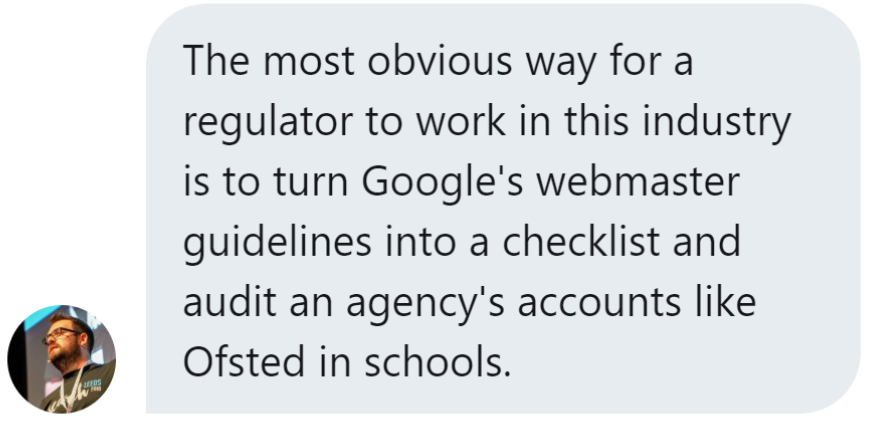







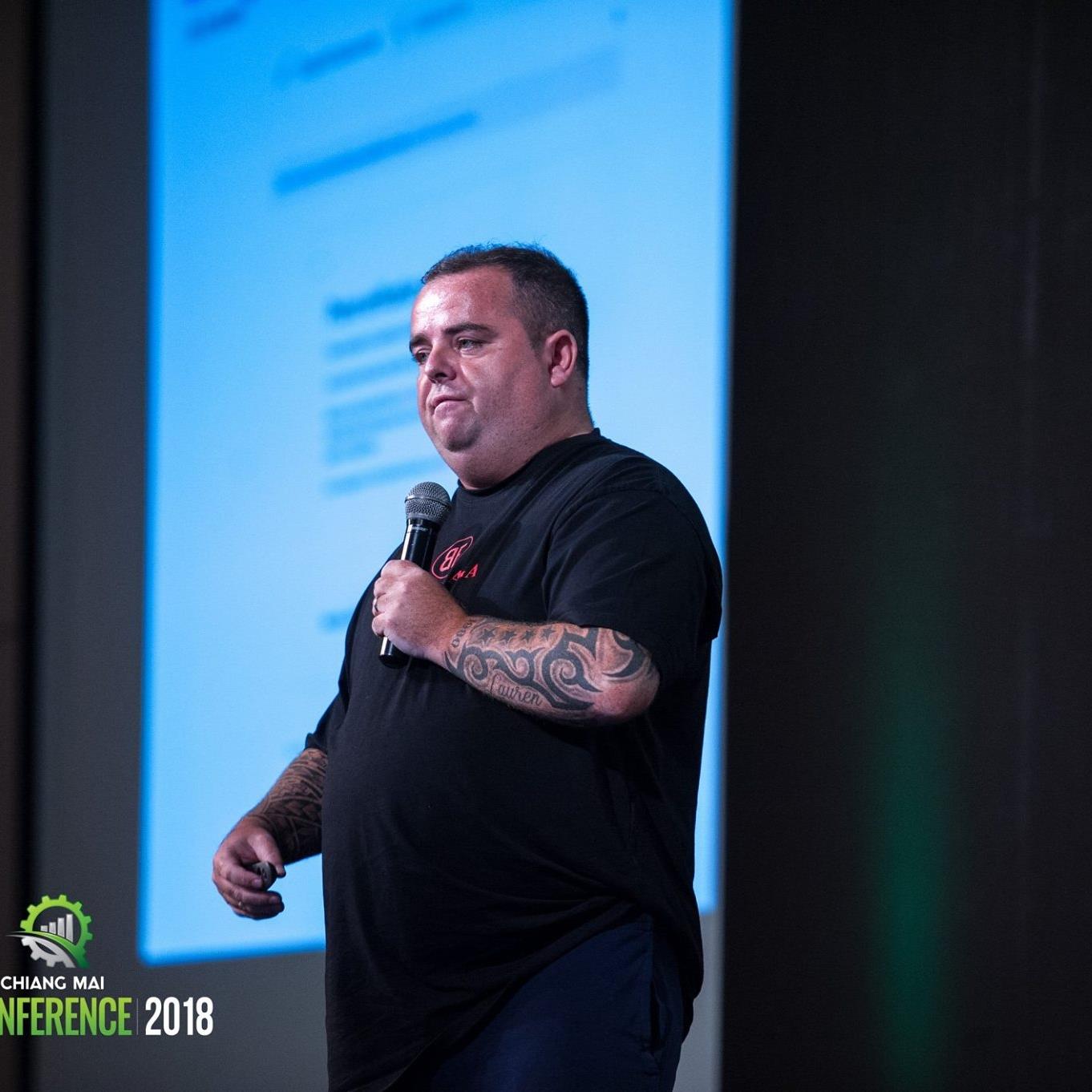
 Source: Chang Mai Conference 2018
Source: Chang Mai Conference 2018 Source: Twitter
Source: Twitter


